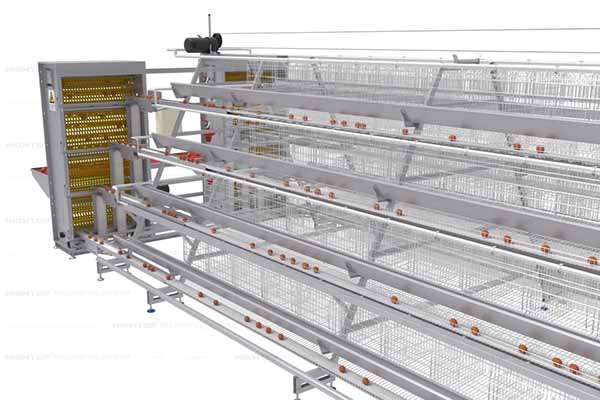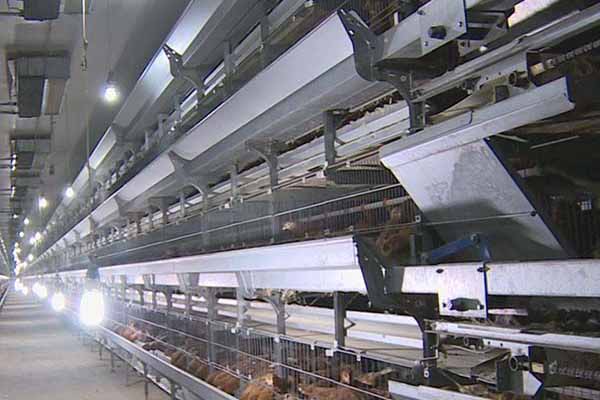Successful Cases of Automated Chicken Farm Equipment in Kenya
Time : 2025-06-28
In recent years, the poultry industry in Kenya has witnessed significant growth, largely driven by advancements in technology and automation. Automated chicken farm equipment has played a pivotal role in enhancing productivity, reducing labor costs, and ensuring animal welfare. This article highlights some of the successful cases of automated chicken farm equipment in Kenya, showcasing the benefits and the future potential of such technologies.
Introduction to Automated Chicken Farm Equipment
Automated chicken farm equipment refers to a range of technologies designed to streamline various processes in chicken farming. These technologies include automatic feeding systems, egg collection machines, waste management systems, climate control systems, and more. The integration of such systems not only increases efficiency but also promotes better health and welfare for the chickens.

Case Study 1: Kenyan Poultry Limited
Kenyan Poultry Limited (KPL) is one of the leading poultry producers in Kenya. The company has successfully implemented automated chicken farm equipment to enhance its operations. Here are some of the key benefits observed:
- Increased Productivity: The automated feeding system ensures that the chickens receive the right amount of feed at the right time, leading to improved growth rates.
- Reduced Labor Costs: The automation of processes such as feeding and egg collection has reduced the need for manual labor, thereby cutting down on labor costs.
- Better Egg Quality: The use of climate control systems has helped maintain optimal conditions for the chickens, leading to better egg quality.
The integration of automated equipment at KPL has resulted in a 30% increase in egg production and a 20% reduction in feed conversion rates.
Case Study 2: Kambu Chicken Farm
Kambu Chicken Farm is another success story in Kenya. The farm has adopted automated systems to manage its operations efficiently. Here are the notable achievements:

- Waste Management: The farm has implemented an automated waste management system that converts chicken droppings into organic fertilizers, reducing environmental impact.
- Energy Savings: The use of automated climate control systems has helped in reducing energy consumption by optimizing the farm’s heating and cooling processes.
- Health Monitoring: Automated health monitoring systems have enabled the farm to detect early signs of disease, leading to timely intervention and reduced mortality rates.
As a result, Kambu Chicken Farm has seen a 25% increase in overall farm profitability.
Case Study 3: Ndururu Poultry
Ndururu Poultry is a medium-sized chicken farm that has embraced automated chicken farm equipment. The following benefits have been observed:
- Scalability: The automated systems are designed to scale up with the farm’s growth, making it easier to expand operations without significant investment in additional labor.
- Customization: The farm has customized the automated equipment to meet its specific needs, ensuring optimal performance.
- Data Analysis: The use of automated systems allows for real-time data collection and analysis, enabling the farm to make informed decisions and improvements.
Ndururu Poultry has reported a 40% increase in production and a 15% reduction in feed costs.
Conclusion
The successful cases of automated chicken farm equipment in Kenya demonstrate the transformative power of technology in the poultry industry. By adopting such technologies, farms can achieve higher productivity, better animal welfare, and improved profitability. As the industry continues to grow, the integration of automated chicken farm equipment is expected to become even more prevalent, driving innovation and efficiency.
Final Thoughts
The implementation of automate d chicken farm equipment in Kenya has not only enhanced the operational efficiency of poultry farms but has also contributed to the overall growth of the industry. With ongoing advancements in technology, the future looks promising for the poultry sector in Kenya.
d chicken farm equipment in Kenya has not only enhanced the operational efficiency of poultry farms but has also contributed to the overall growth of the industry. With ongoing advancements in technology, the future looks promising for the poultry sector in Kenya.











